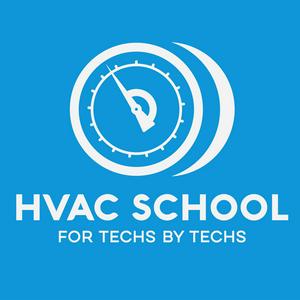The PATH to High Performance HVAC w/ David Richardson
In this engaging session, David Richardson breaks down the concept of high-performance HVAC, offering a clear roadmap for industry professionals looking to elevate their craft. Richardson argues that the HVAC industry has long been focused on equipment rather than complete systems, leading to widespread inefficiencies. The average system delivers only about 57% of its rated capacity into buildings, while even code-approved systems barely reach 63%. By implementing high-performance HVAC principles, contractors can achieve up to 88% efficiency while improving safety, health, comfort, and energy performance. Richardson presents a practical framework using the acronym "PATH" - Pressure, Airflow, Temperature, and Heat (BTUs) - as a step-by-step approach to implementing high-performance HVAC. He emphasizes starting with static pressure testing, which he calls "the foundation of airflow" and one of the most misunderstood principles in the industry. Just as doctors check blood pressure as a vital sign during every visit, Richardson advocates for measuring static pressure on every call, or at minimum, when encountering "red flag" issues like repeated equipment failures. From there, professionals can progress to measuring airflow, temperature, and finally BTU delivery to create complete system diagnostics. The presentation offers a journey-based approach, acknowledging that implementation takes time and requires breaking old habits. Richardson introduces the "one degree principle," suggesting that change happens incrementally, with small improvements eventually leading to breakthrough moments. He urges contractors to apply this methodology not just to equipment, but to extend testing into duct systems and even the building envelope. By making these changes visible through measurement, contractors can prove value to themselves, their teams, and ultimately their customers, transforming the way HVAC work is perceived and delivered. Key Topics Covered: The definition of high-performance HVAC: getting back to craftsmanship, challenging the status quo, and confirming work through measurement The industry problem: focusing on equipment instead of complete systems, resulting in just 57% of rated BTU capacity reaching conditioned spaces The PATH framework: Pressure, Airflow, Temperature, and Heat as building blocks for system diagnostics How to implement static pressure testing as the foundation for airflow diagnostics The importance of measuring at both equipment and register/grille locations Breaking down implementation into three areas: equipment, ducts, and building envelope STEPS approach: Show, Teach, Equip, Promote, with application to yourself, your team, and your customers The "one degree principle" for making incremental changes that lead to breakthrough results Common obstacles to implementation and how to overcome resistance to change How measurements make your work transparent and lead to better performance Have a question that you want us to answer on the podcast? Submit your questions at https://www.speakpipe.com/hvacschool. Purchase your tickets or learn more about the 6th Annual HVACR Training Symposium at https://hvacrschool.com/symposium. Subscribe to our podcast on your iPhone or Android. Subscribe to our YouTube channel. Check out our handy calculators here or on the HVAC School Mobile App for Apple and Android
